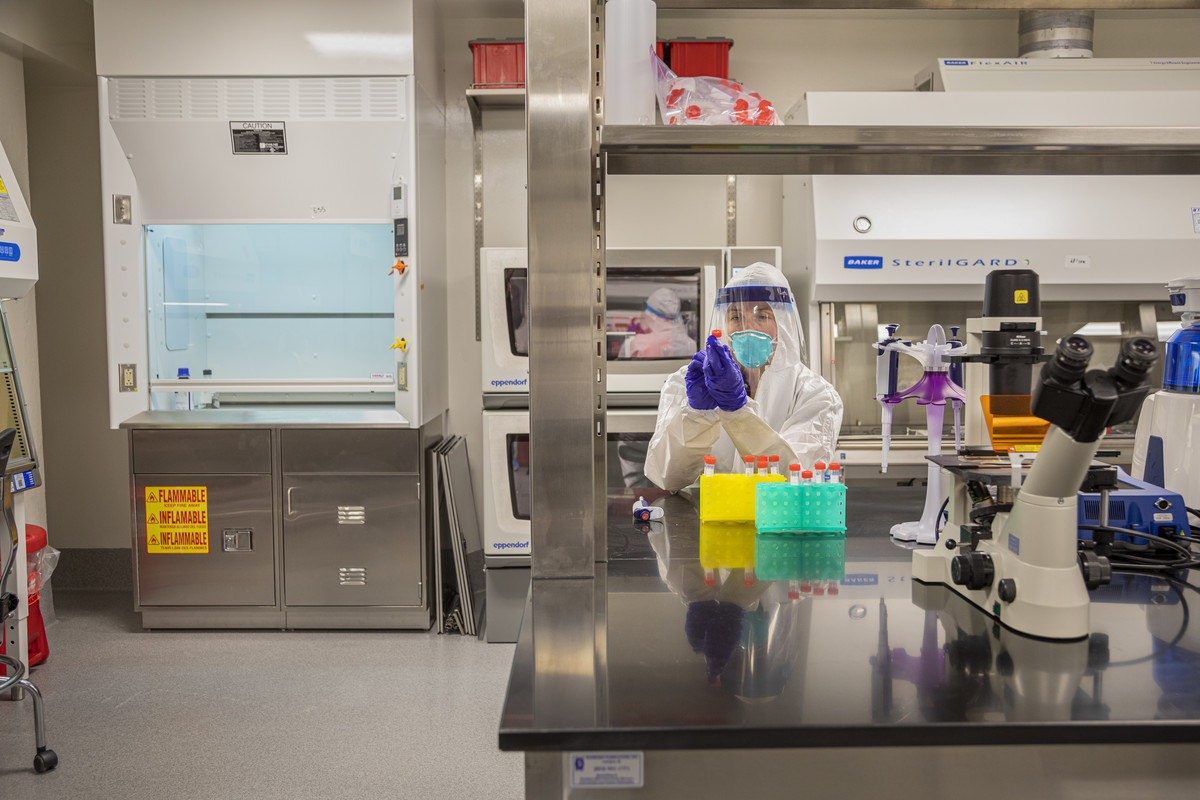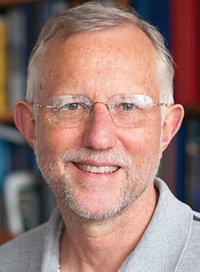Noninfectious versions of SARS-CoV-2 provide powerful research tools

With replicons, research on SARS-CoV-2 need not be confined to high-biosafety labs.
To study a virus as infectious as SARS-CoV-2, researchers need to follow laborious protocols and have access to high-biosafety laboratories. Seeking to make such investigations safer, faster, and accessible to more teams around the world, virologists have created SARS-CoV-2 replicons—self-replicating RNAs that are not infectious but otherwise identical to the real virus.
Replicons mimic nearly every aspect of the viral life cycle. Their RNA has all the information the virus needs to replicate and make copies of itself, but lacks instructions for making spikes, the proteins that enable the virus to enter and infect human cells. Once introduced to cells in a dish, a replicon makes progeny that are unable to spread to neighboring cells.
“With this system, scientists will be able to investigate SARS-CoV-2 and its variants, test drugs against it, and evaluate neutralizing antibodies, all in a faster way and in lower biosafety settings,” says Nobel Laureate Charles M. Rice, a Rockefeller virologist who co-led the work with Volker Thiel from the University of Bern and Institute of Virology and Immunology. The study is published in the journal Science.
Taking the wheels off
Replicon systems have proved instrumental in drug development against other viruses, including hepatitis C. Once Rice and others had created hepatitis C replicons, other scientists were able to develop potent and safe drugs that can effectively cure this chronic infection
Replicons are typically created by cloning viral RNA genomes into DNA fragments that can then be used to make RNA artificially. But this method doesn’t work well for coronavirus RNA, which is exceptionally long. So the researchers took a different approach, using a platform developed by Thiel’s group, making it possible to assemble coronavirus genomes from smaller fragments in yeast instead of in the test tube.
Using this approach, they created a coronavirus genome that lacks the RNA segment encoding spike protein.
“If the virus were a race car, we made a version without wheels. It has the engine and all the parts that would allow the car to move, but it can’t actually go anywhere,” says Joseph Luna, a postdoc in the Rice lab and co-first author of the Science report.
Removing the spike protein poses a problem, however. Many current studies focus on this very component of SARS-CoV-2—it is the main target of monoclonal antibody therapy, for example. To make the replicons useful for research on therapies such as antibodies, the team expressed the spike protein separately alongside the replicon. The results were replicon delivery particles, single-use viruses that can deliver replicons into cells. These particles are capable of entering cells, but unlike real coronavirus particles their infectiousness is limited to exactly one viral life cycle.
A wide scope of applications
The scientists say their replicons can be used to investigate how the virus hijacks the cell’s own machinery and how it generates new copies of itself. In addition, they might make it possible to identify the human proteins without which the virus cannot replicate. As a proof of concept, the team examined the effects of TMEM41B, a human protein previously found to be necessary for SARS-CoV-2 replication. Just like the authentic coronavirus, the replicons could not replicate in cells lacking this protein.
The replicons can also be used to screen chemical libraries for drug compounds capable of blocking viral replication. In other experiments, the team incubated the replicons with remdesivir, an antiviral known to inhibit the virus. “We found it inhibits the replicon at the same concentrations as it inhibits the actual virus,” says co-first author Inna Ricardo Lax, a postdoc in the Rice lab. “It shows that the replicon system can be a reliable alternative for SARS-CoV-2 to test different drugs.”



